Tour de France 2023 route: Every stage of the 110th edition in detail
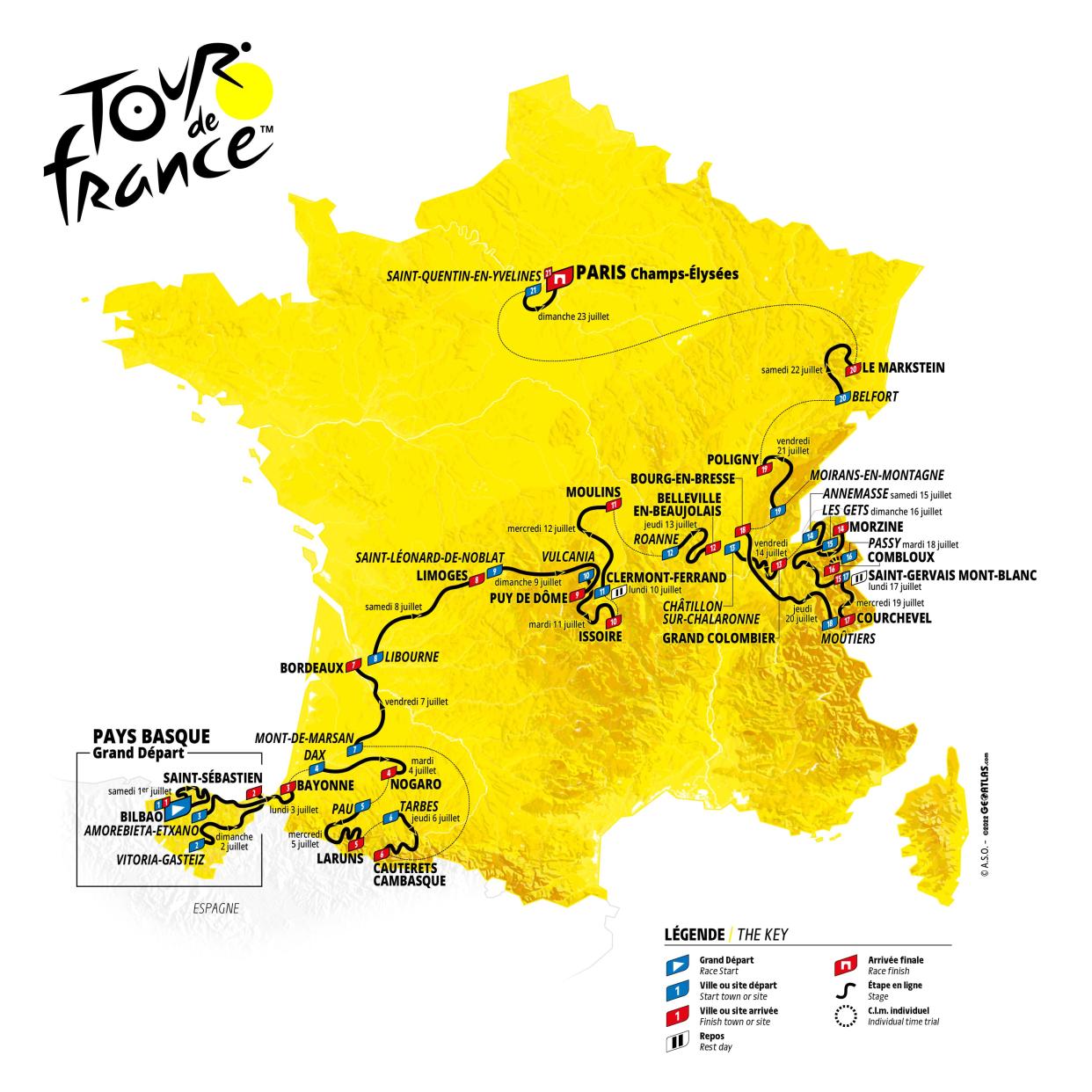
The 2023 men's Tour de France route looks set to be one for the climbers, as it features four summit finishes, including a return for the iconic Puy de Dôme climb for the first time since 1988.
There is just one time trial across the three-week event, a short uphill race against the clock from Passy to Combloux over 22km. There are also returns for other epic climbs like the Col de la Loze and the Grand Colombier, with 56,400 metres of climbing on the Tour de France 2023 route.
The race will start on foreign soil for the second year in a row, with a Grand Départ in the Spanish Basque Country, the setting for the race's 120th anniversary. Two hilly stages in Spain then follow, before the peloton crosses the border into France for a stage finish in Bayonne on day three.
After visiting Pau for the 74th time on stage five, the race's first real mountain test comes on stage six, leaving Tarbes and cresting the Col d’Aspin and Col du Tourmalet before a summit finish in Cauterets.
On stage seven, the Tour’s second most visited city, Bordeaux, will welcome its first stage finish since 2010, when Mark Cavendish claimed his 14th of a record 34 stage wins. Leaving nearby Libourne the next day, stage eight will head east on a 201km slog to Limoges.
Before the first rest day, the riders will wind up to the summit of the Puy de Dôme, a dormant lava dome which hasn’t featured in the Tour for 35 years. They’ll then enjoy a well-earned day off in Clermont-Ferrand before continuing their passage through the Massif Central.
France’s national holiday, 14 July, will be celebrated next year with a summit finish on the Grand Colombier, the site of Tadej Pogačar’s second stage win back in 2020. From there, the mountains keep coming. The riders will climb over the Col de Joux Plaine to Morzine on stage 14, before another mountaintop test in Saint-Gervais Mont-Blanc the next day.
The sole individual time trial of the Tour de Franc route comes on stage 16, when a hilly 22km dash from Passy to Combloux will give the GC contenders a chance to force time gaps. The following day will bring the stage with the highest elevation gain, counting 5000m of climbing en route to the Courchevel altiport, via the Cormet de Roselend and the monstrous Col de la Loze.
On stages 18 and 19, the sprinters are expected to come to the fore, with flat finishes in Bourg-en-Bresse and Poligny.
The penultimate stage will play out in the country’s most easterly region, ascending the Petit Ballon, Col du Platzerwasel and finishing in Le Markstein, as the Tour de France Femmes did last year.
The riders will then undertake a 500km transfer to the outskirts of Paris for the curtain-closing stage. The final day will start at France’s national velodrome in Saint-Quentin-en-Yvelines, the track cycling venue for the 2024 Olympics, and will conclude with the customary laps of the capital’s Champs-Elysées.
The 2023 Tour de France will begin on 1 July, with the winner crowned in Paris on 23 July.
2023 Tour de France stage table
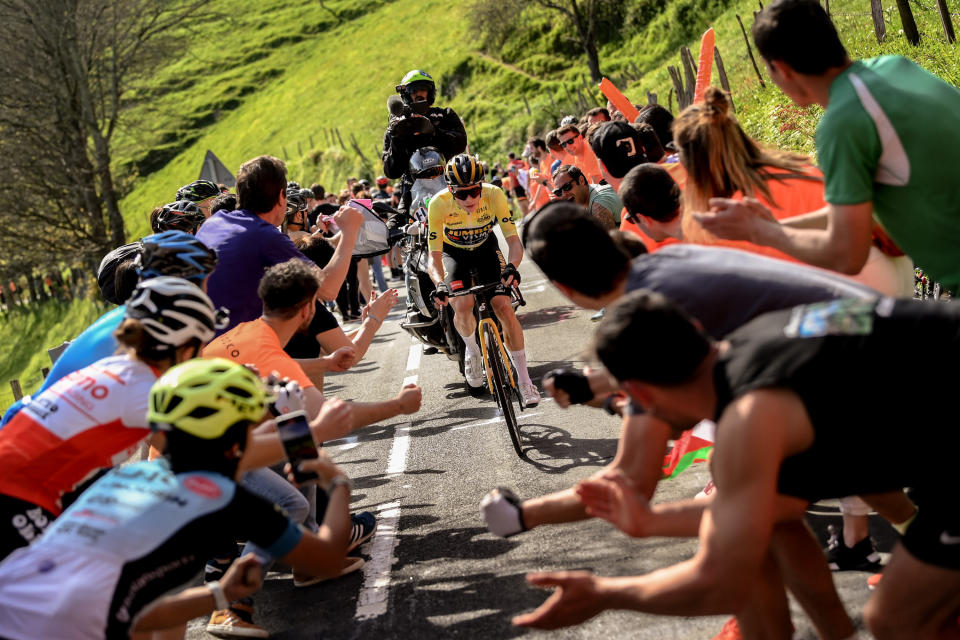
Tour de France route week summary
Tour de France week one
The race begins in Bilbao, starting in the Basque Country for the first time since 1992, when the Tour started in San Sebastian. The first two stages are packed full of climbs, with ten classified hills in over the opening couple of days, meaning there will be a fierce battle for the polka-dot jersey. Watch out for Basque fans going crazy on the roadside.
Stage three sees the race cross into France, which it will not leave for the rest of the 18 days. A sprint finish will be expected in Bayonne, but there are four categorised climbs en-route. Nothing is easy this year.
The fourth day will likely be another sprint, on a motor racing circuit in Nogaro, as the race moves, ominously, towards the Pyrenees. The Hors Categorie Col de Soudet on stage five is the first proper mountain of the race, and is followed by the Col de Marie Blanque, which has tough gradients. A GC day early on, although they are all GC days, really.
Stage five is a mountain top finish in Cauterets-Cambasque, but its gradients shouldn't catch too many out; it is the Col d'Aspin and Col du Tourmalet that will put people through it.
For the seventh day of the race a chance for the riders to relax their legs as the race heads northwest to an almost nailed-on sprint finish, before another opportunity for the fast men presents itself on stage eight - if they make it over the two category four climbs towards the end, and then the final is also uphill.
The long first week of the race - which will feel longer because last year had a bonus rest day - ends with the mythical Puy de Dôme, which will surely separate the big guns out.
Tour de France week two
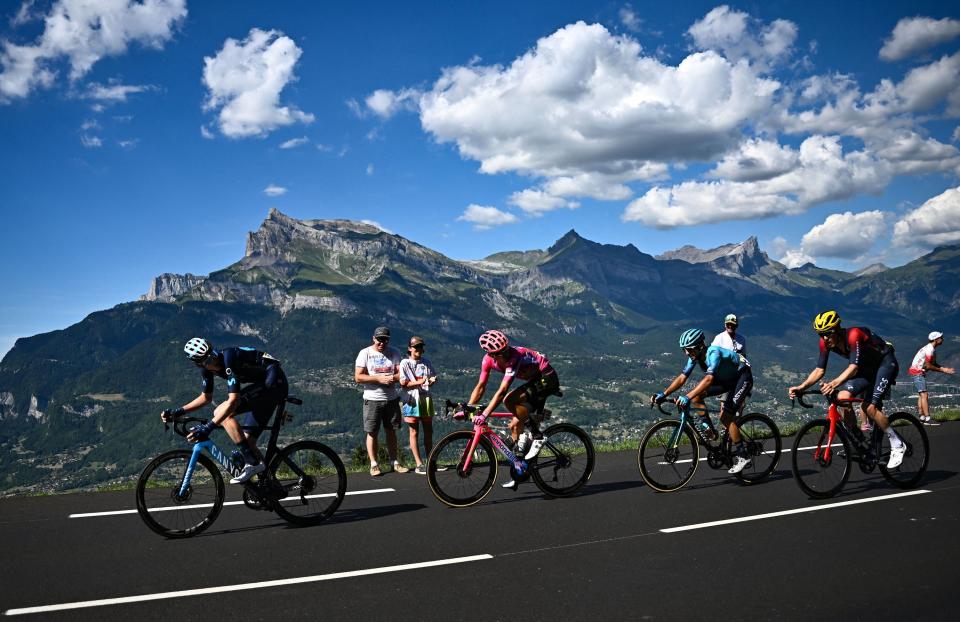
The second week begins with a lumpy road stage around Clermont-Ferrand, starting from a volcano-themed theme park. This will surely be a day for the break. The next day could also be one if the sprint teams fail to get their act together, with two early categorised climbs potential ambush points.
Back into the medium mountains on stage 12, with a finish in the wine making heartland of the Beaujolais, Belleville. Another day for the break, probably, but none of the five categorised climbs are easy.
The following day, stage 13, is France's national holiday, 14 Juillet. The Grand Colombier at the end of the day is the big attraction, with its slopes expected to cause shifts on the GC. Stage 14 is yet another mountain stage as the Tour really gets serious, with the Col de la Ramaz followed by the Col de Joux Plane. The latter, 11.6km at 8.5%, will be a real test for a reduced peloton, before a downhill finish into Morzine.
The final day of week two, stage 15, is yet another day in the Alps before a rest day in Saint-Gervais-Mont-Blanc. There is nothing as fearsome as the previous days, but 4527m of climbing should still be feared.
Tour de France week three
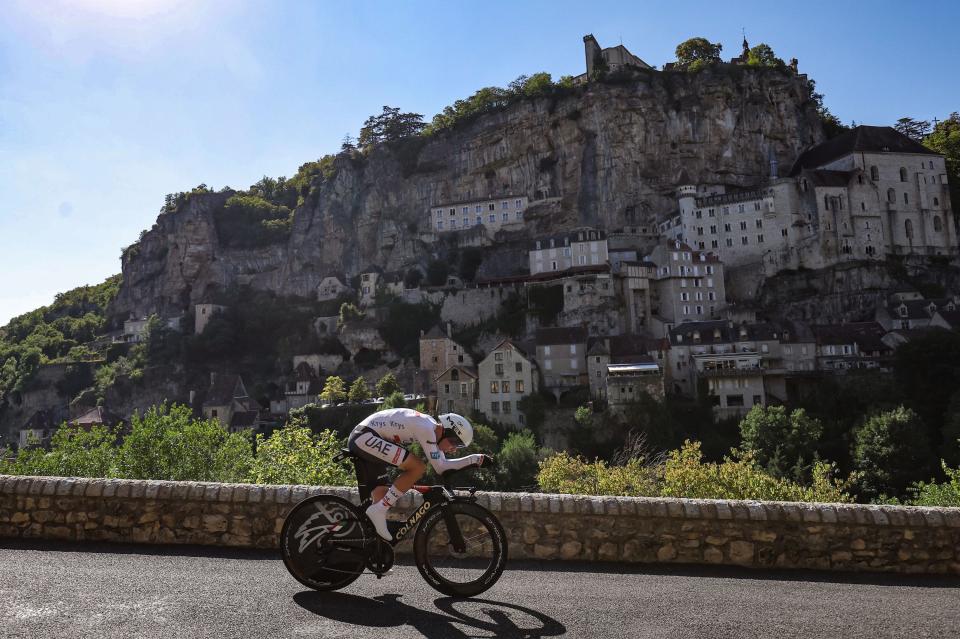
The third and final week begins with the race's only time trial, 22km long and with a lot of uphill. It is not a mountain event, but it is certainly not one for the pure rouleurs.
Stage 17 looks like the race's Queen Stage, with the final climb up to the Col de la Loze looking incredibly tough on paper, and in real life. That follows the Col de Saisies, the Cormet de Roselend and the Côte de Longefoy, adding up to 5,100m of climbing. The race might be decided on this day.
After that, there is a nice day for the sprinters on stage 18, with a flat finish in Bourg-en-Bresse surely one for the fast men. The next day, stage 19 could be a breakaway day or a sprint finish, depending on how desperate teams are feeling, or how powerful the remaining leadout trains are.
The final mountainous day comes on the penultimate stage, with the men following the Femmes lead and finishing in Le Markstein. However, there's no Grand Ballon, just the Petit Ballon, and so unless something chaotic happens, there should not be great time switches on this stage.
Then, at last, there is the usual finish on the Champs-Élysées in Paris, after the race heads out of Saint-Quentin-en-Yvelines, which has a long-term deal to host the start of Paris-Nice too. ASO country.
Remember, this will be the last time Paris hosts the Tour de France until 2025. So, be prepared.
Tour de France 2023: The stages
Stage one: Bilbao to Bilbao (182km)
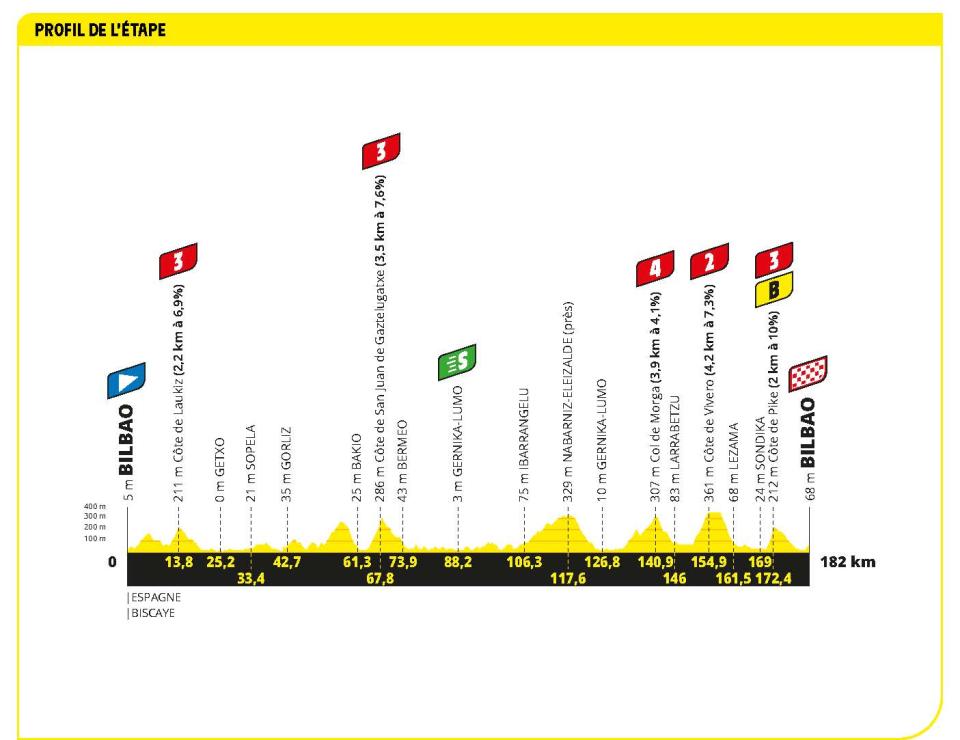
There is no easing into the Tour de France for the peloton this year, with a tough, punchy day in the Basque Country meaning racing right from the gun. Five categorised climbs will provide ample opportunity for sprinters to be chucked out the back, leaving puncheurs and fast men who can climb. Whoever wears the polka-dot jersey on day two will have earned it.
Stage two: Vitoria-Gasteiz to Saint Sebastian (208.9km)
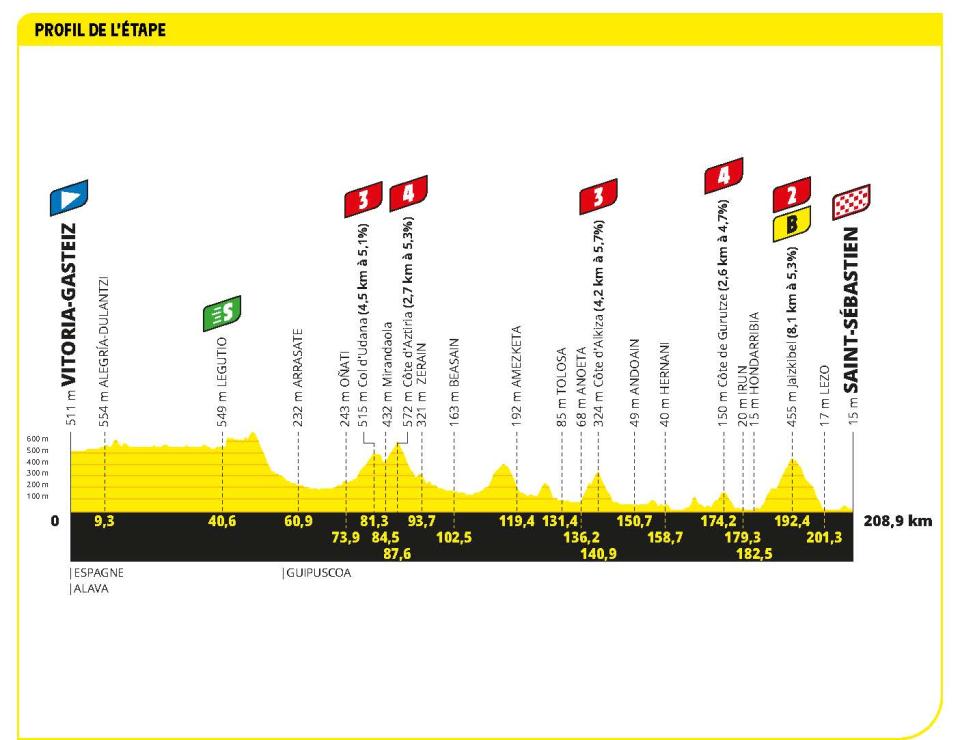
This is the longest stage of the Tour, surprisingly. The Giro d’Italia had three longer days in the saddle, but the Tour favours shorter days. Five more categorised climbs will surely mean it is not a sprint stage, including the Jaizkibel, famous from the Clasica San Sebastian, tackled on its eastern side 20km from the finish.
Stage three: Amorebiata-Etxano to Bayonne (187.4km)
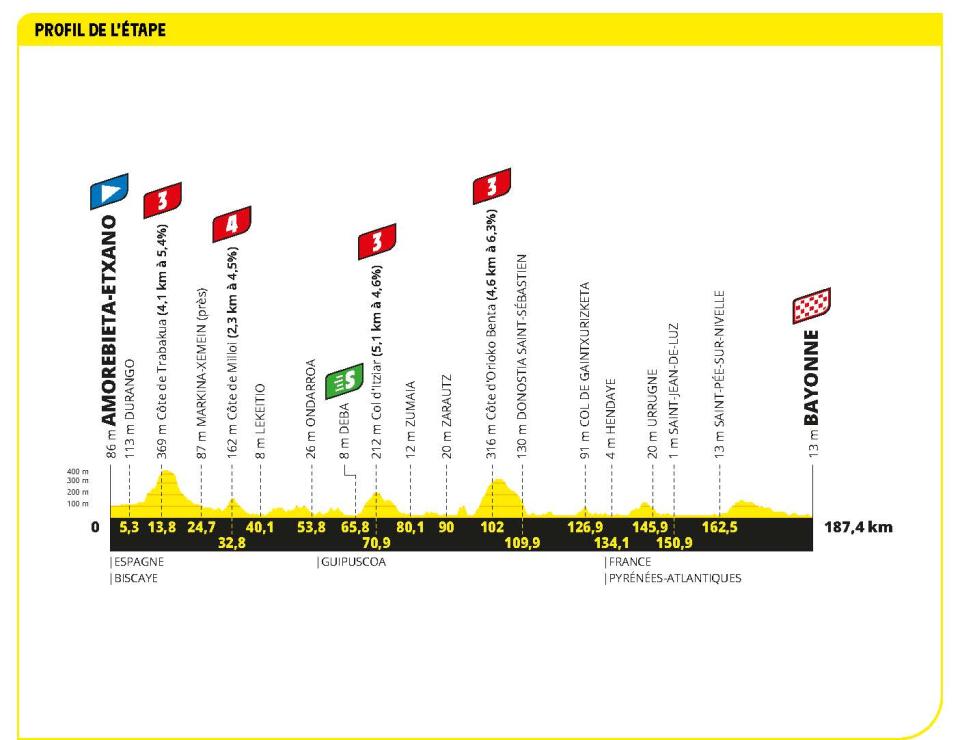
If the first two stages were not for sprinters, then stage three should be, especially as they will be desperate for a look at the finish line by this point. Four early categorised climbs could put a spanner in the works, however.
Stage four: Dax to Nogaro (181.8km)
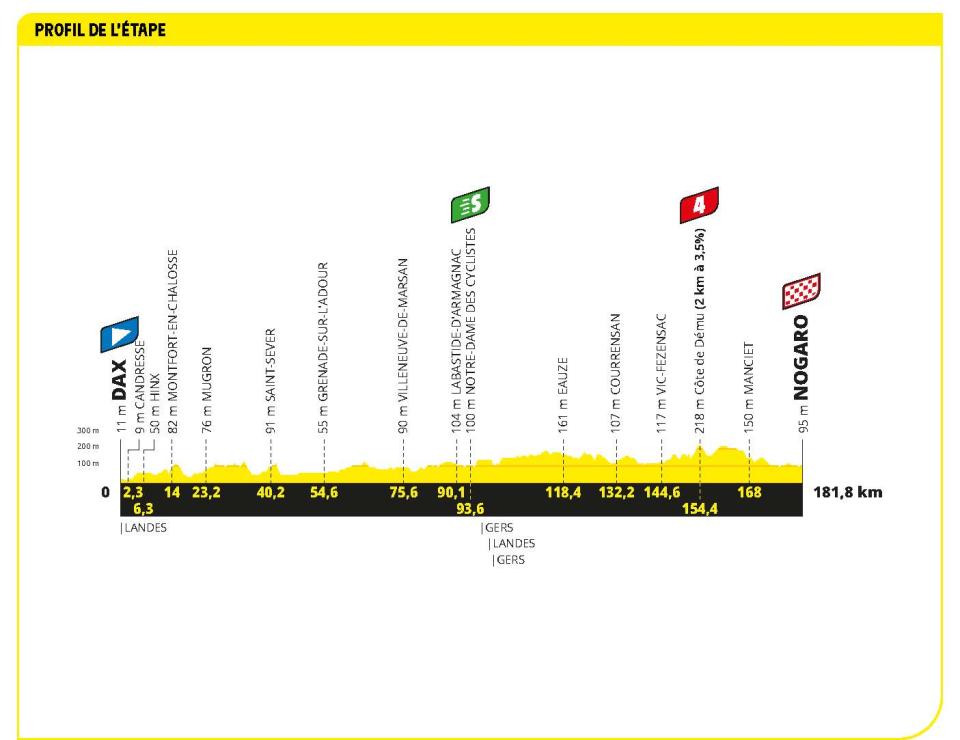
Now this one has to be a sprint finish, right? It even finishes on a motor racing circuit in Nogaro, meaning teams have a long old time to sort their leadout trains.
Stage five: Pau to Laruns (162.7km)
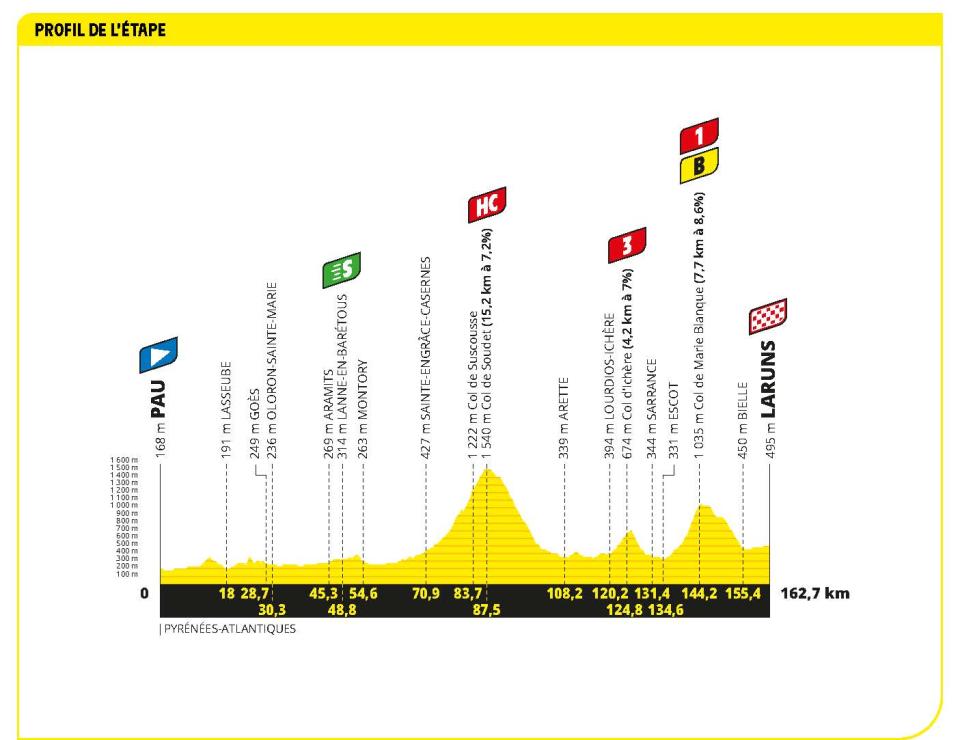
The first Hors Categorie climb of the race comes on stage five, the Col de Soudet, which is 15.2km at 7.2%, before the Col de Marie-Blanque and its steep gradients. It seems early for a GC shakeup, but this is a brutal Tour de France.
Stage six: Tarbes to Cauterets-Cambasque (144.9km)
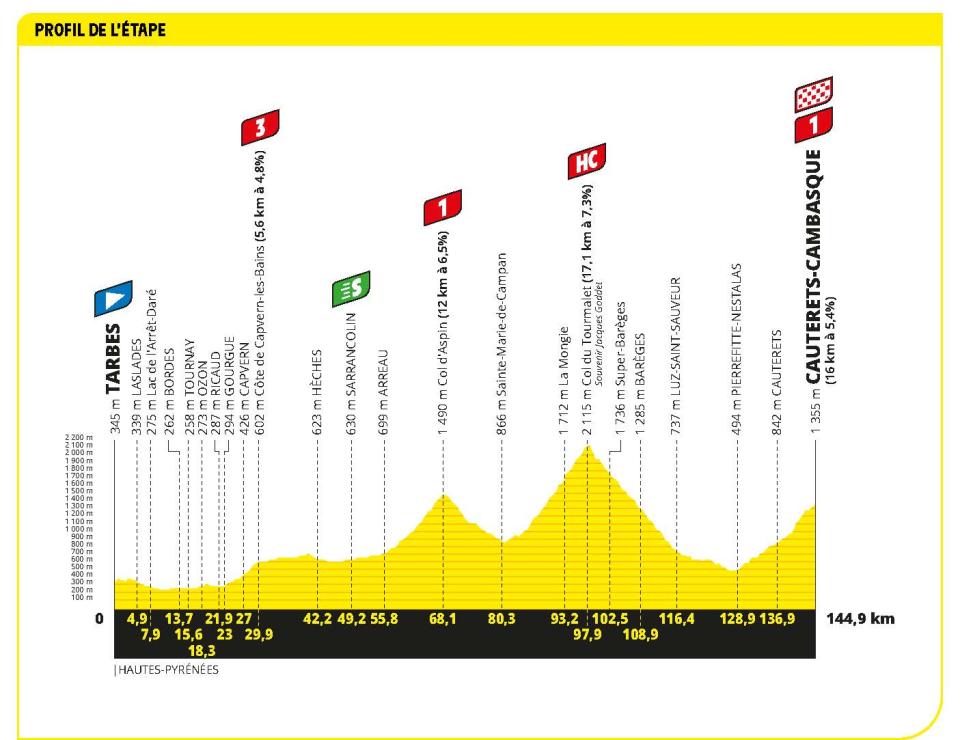
A first summit finish, but quite a gentle summit finish, with the final climb 16km at 5.4%. It is the Col d’Aspin and the Col du Tourmalet which should be watched out for, if teams want to light things up from far out.
The last time the race came here, in 2015, Rafał Majka won.
Stage seven: Mont-de-Marsan to Bordeaux (169.9km)
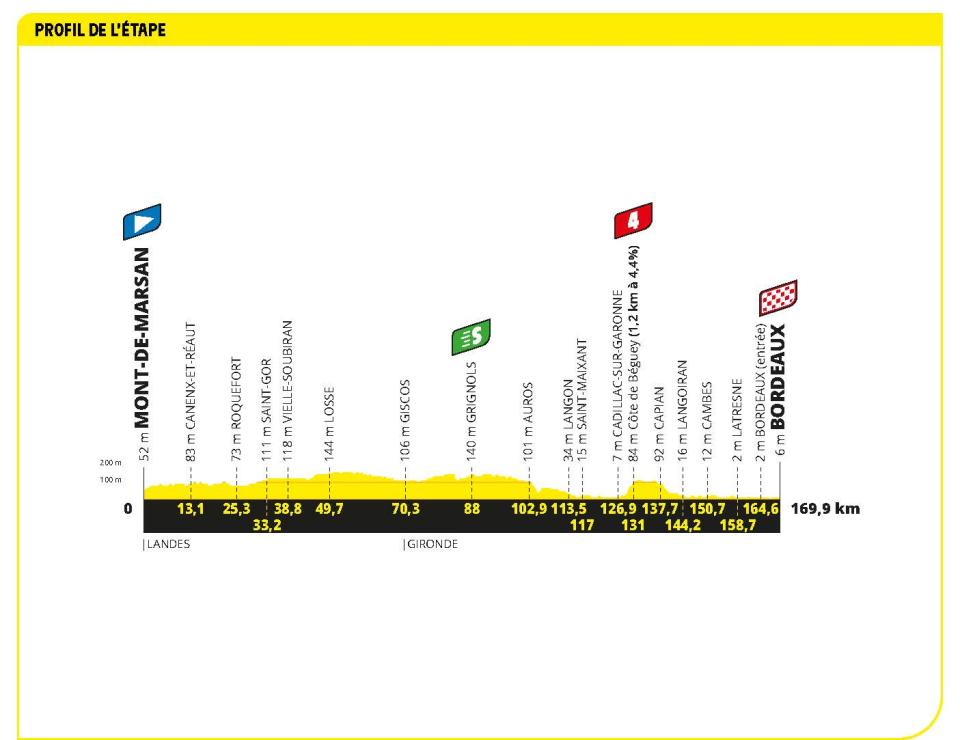
After all that climbing, finally a flat day. There are just 785 vertical metres in 160km on stage seven, with Bordeaux’s first stage finish since 2010 surely a sprint. The winner that day? A certain youthful Mark Cavendish.
Stage eight: Libourne to Limoges (200.7km)
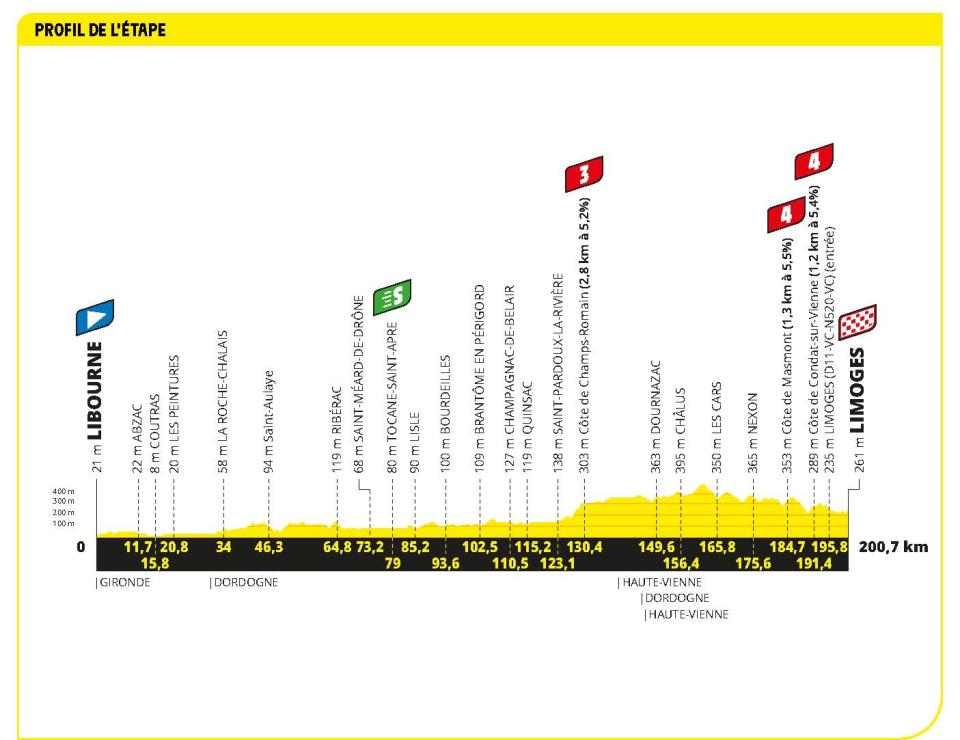
One of only two stages with a distance north of 200km, 190km even. The uphill finish will make it a day for punchier sprinters, a Biniam Girmay (Intermarché-Circus-Wanty) perhaps, or an opportunist taking a flyer.
Stage nine: Saint-Léonard-de-Noblat to Puy de Dôme (184km)
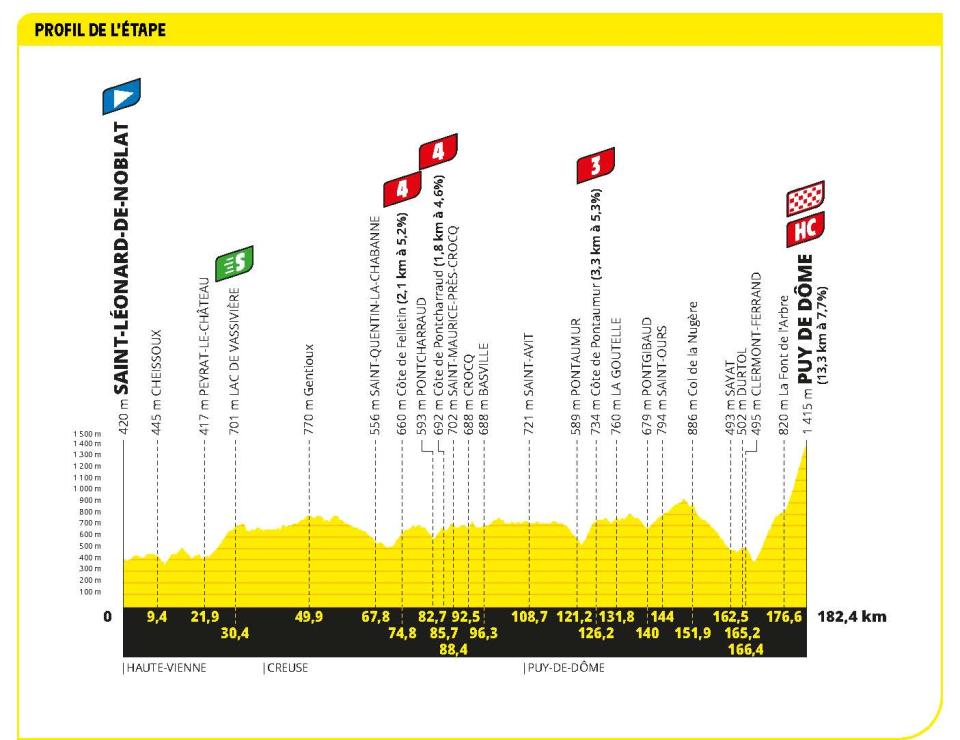
It’s here, it’s finally here. The Puy de Dôme returns to the race for the first time since 1988, and expect volcanic action on the dormant volcano.
There have been great Tour moments on the climb, including a duel between Raymond Poulidor and Jacques Anquetil in 1964, and the incident which saw Eddy Merckx punched by a fan in 1975. The 13.3km climb might seem fine at 7.7%, but there are ramps north of 10% towards the finish. The rest day will be needed.
Stage 10: Vulcania to Issoire (162.7km)
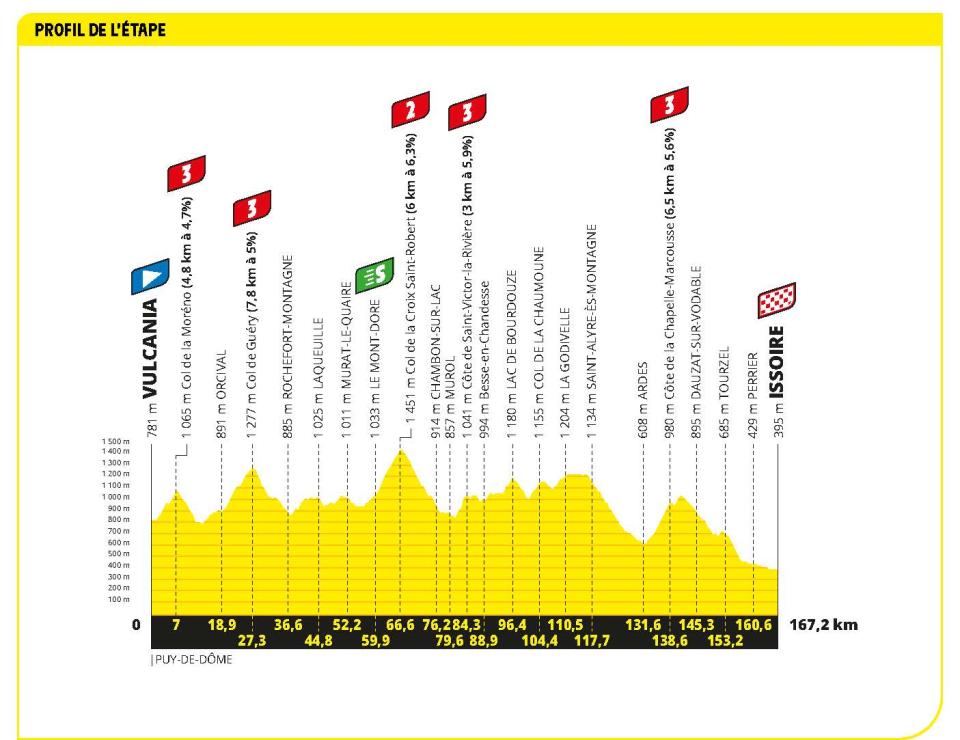
There is barely anything more nailed on than a breakaway day right after a rest day, and this will surely be what stage 10 is. Five categorised climbs, including two in the first 30km, means there will be a fight to get up the road, and then stay away. A downhill finish to Issoire favours the escapees.
Stage 11: Clermont-Ferrand to Moulins (179.8km)
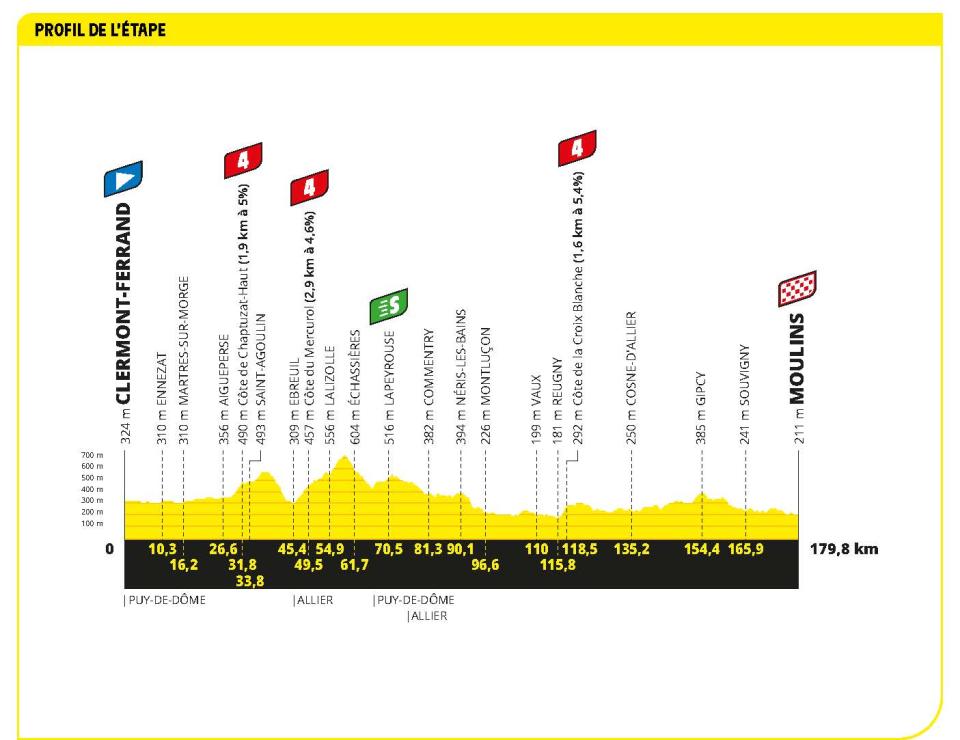
The race will finally leave the environs of Clermont-Ferrand on the 12 July, with what will likely be a fast day for the sprinters to Moulins. Interestingly, this is the first time the Tour has visited Moulins, the capital of the Allier department, although Paris-Nice has visited. This means the Tour has now been to every department capital in mainland France.
Stage 12: Roanne to Belleville-en-Beaujolais (168.8km)
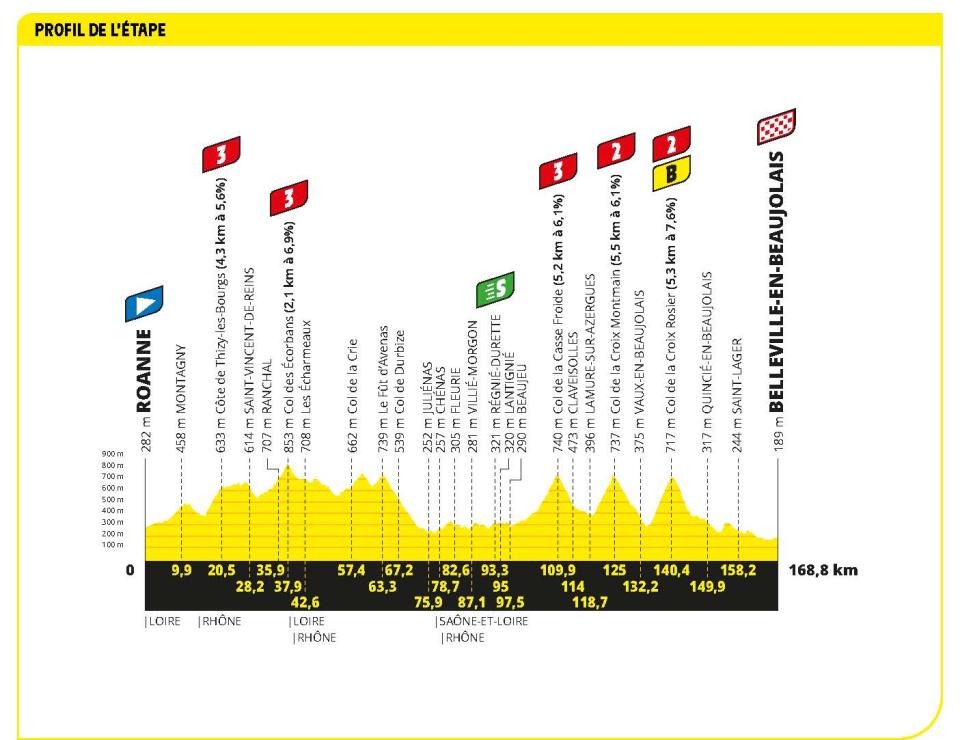
Here is the wine stage, a lovely day in the fields of Beaujolais country - that’s red wine, for you at the back. Five categorised climbs hint towards a breakaway stage, with the Col de la Croix Montmain and Col de la Croix Rosier both climbs to be watched out for. Nothing is easy.
Stage 13: Châtillon-Sur-Chalaronne to Grand Colombier (138km)
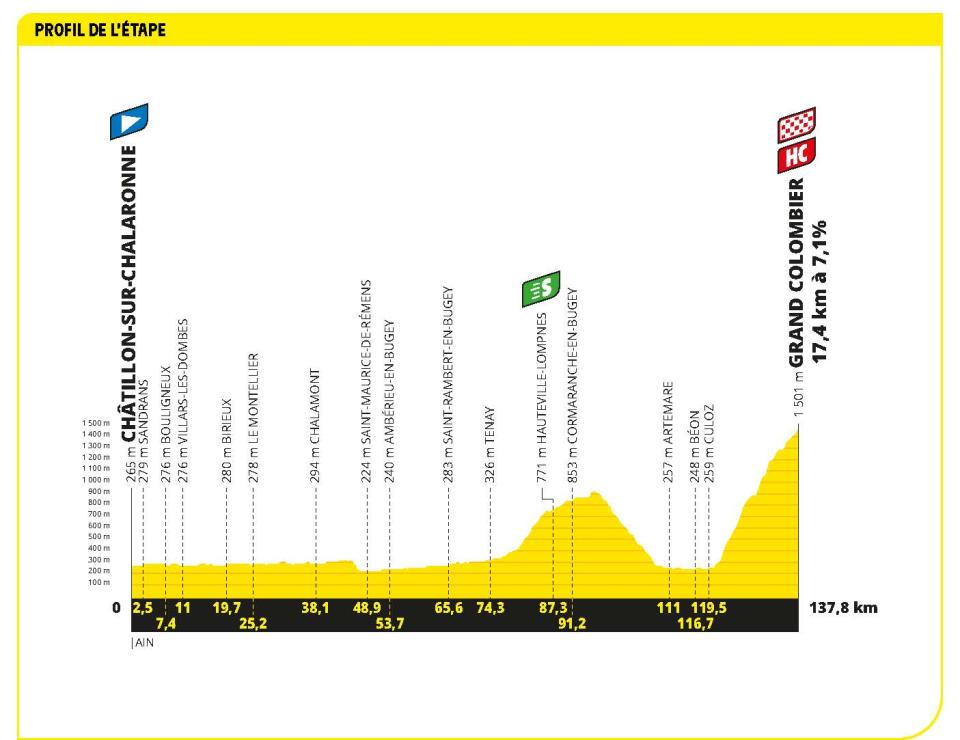
A short, brutal stage for 14 Juillet. Perhaps it will be a chance for a French rider to delight their home crowds on the fête national, or will Tadej Pogačar win here again as he did in 2020? That day, there was no serious time gained or lost on GC, just minor slippages.
Stage 14: Annemasse to Morzine Les Portes du Soleil (151.8km)
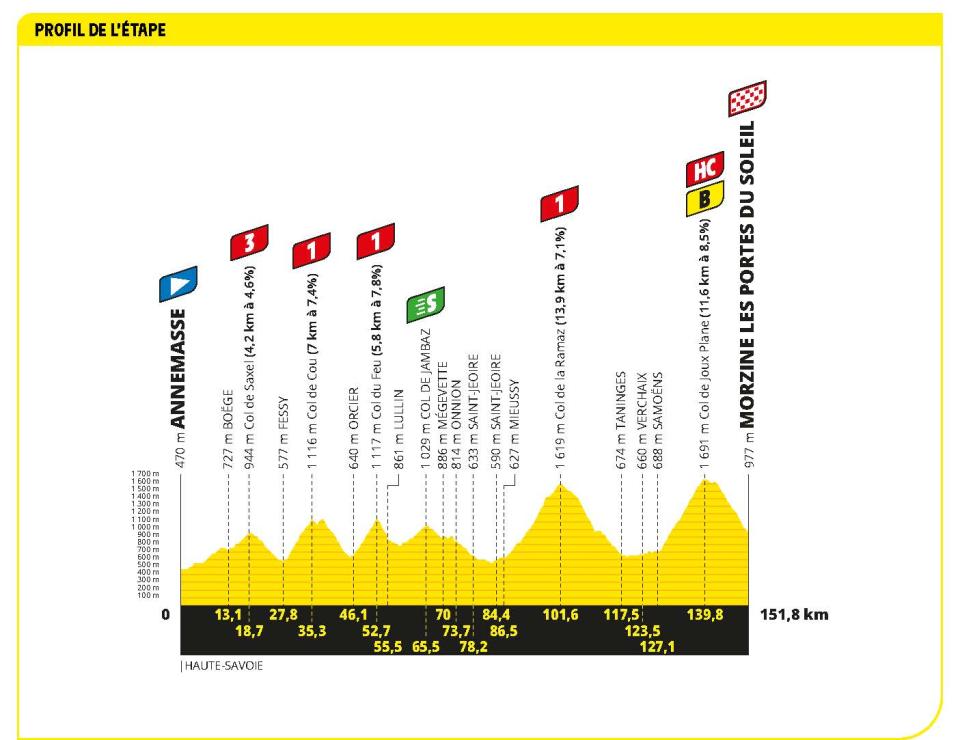
The Tour is back in Morzine, but arriving this time, rather than departing. There are three first category climbs before the HC ascent of the Col de Joux Plane and a descent down to the finish. The last time the race went up here, in 2016, Ion Izagirre won, with Nairo Quintana taking a handful of seconds on eventual winner Chris Froome. Expect fireworks.
Stage 15: Les Gets Les Portes du Soleil to Saint-Gervais-Mont-Blanc (179km)
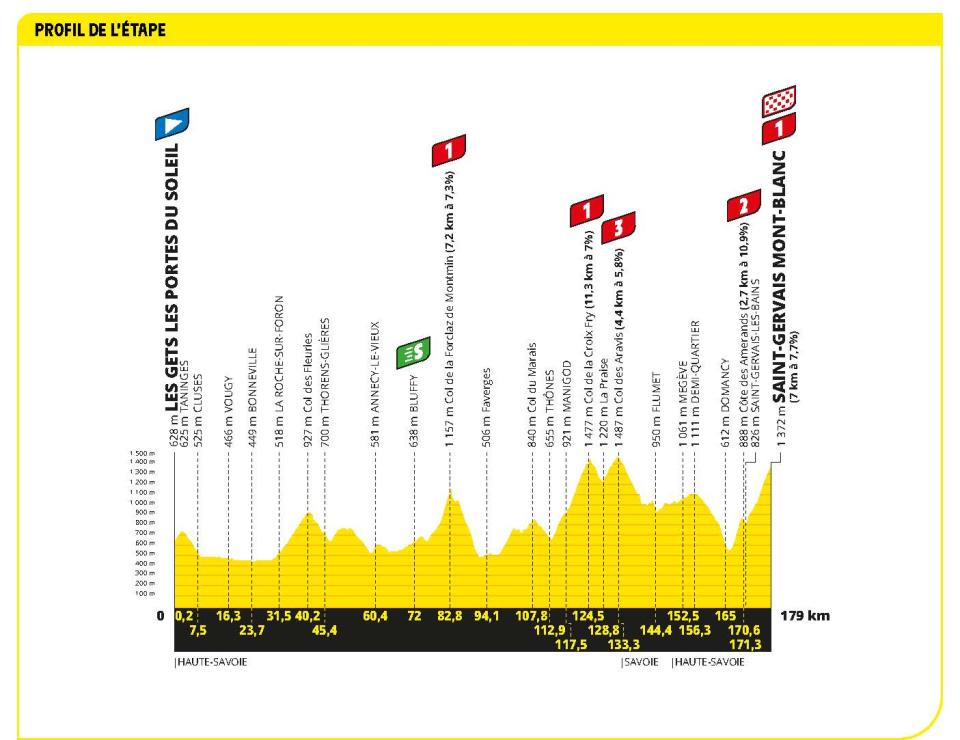
The Alps are far from over yet. Three category one climbs, and two more minor ones create a tough day for all of the peloton. Will it be Tadej Pogačar or Jonas Vingegaard that has the upper hand at this moment? Romain Bardet won here in 2016 to move into second on general classification.
The second rest day follows, so this an opportunity to put it all out on the road.
Stage 16: Passy to Combloux ITT (22.4km)
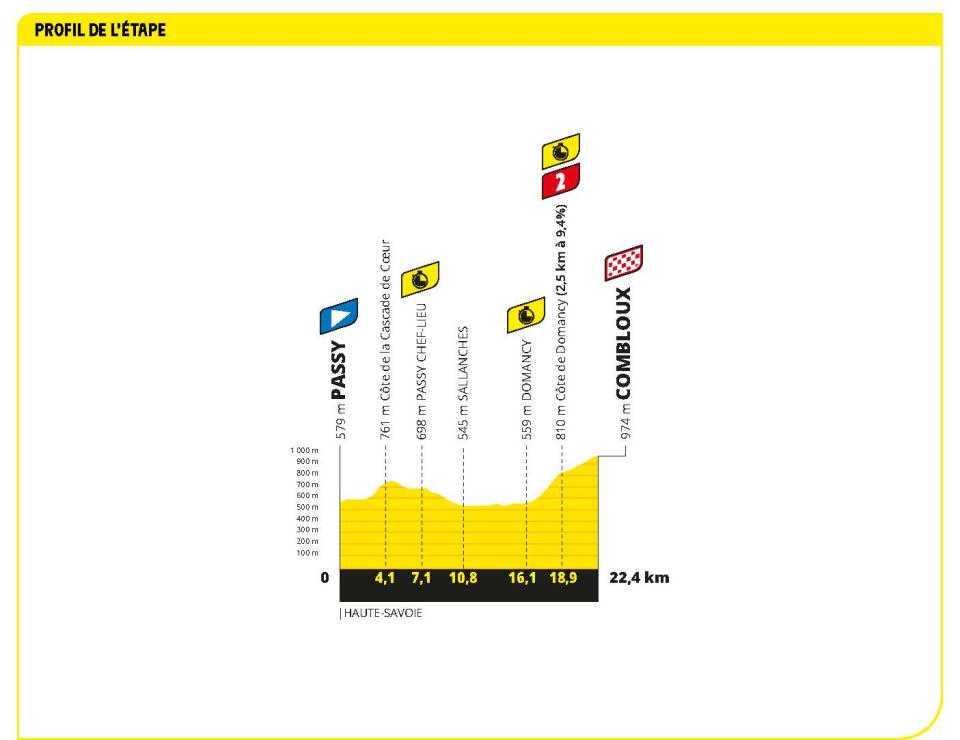
A measly 22.4km of time trialling is all the rouleurs get this year, which is hardly anything, if you think about it. The Giro d’Italia basically did this much on its opening day. There are 638 vertical metres in this TT, so it is far from flat, but it is not quite mountainous either. It’s a decisive day for the GC guys.
Stage 17: Saint-Gervais-Mont-Blanc to Courchevel (165.7km)
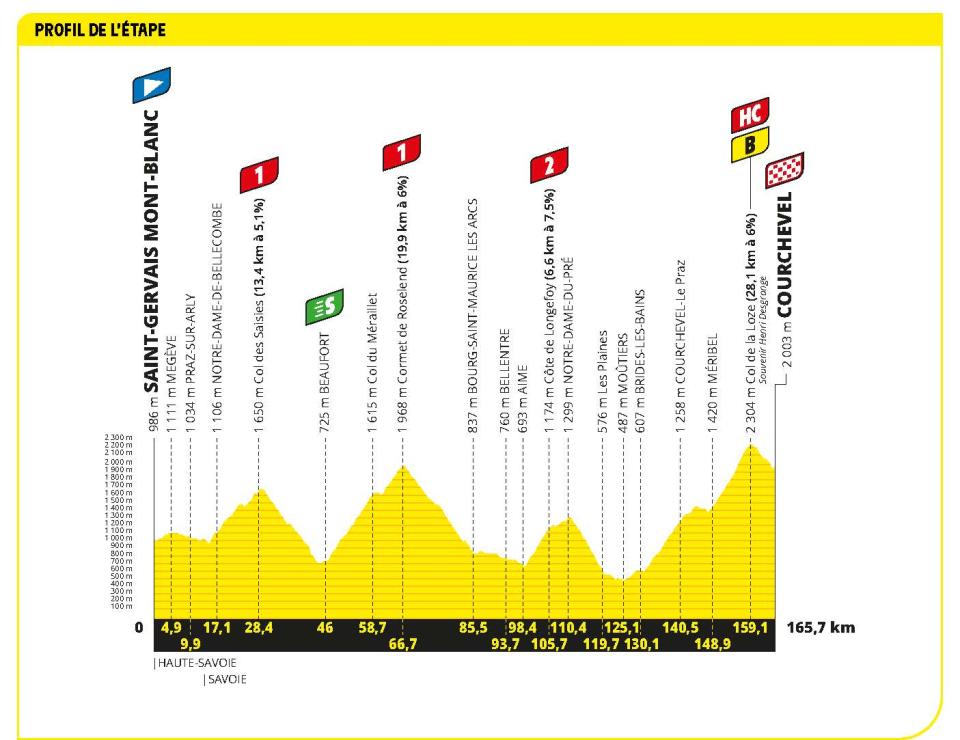
Here it is, the big one. 5,405 metres of climbing on a day which sees two early first category climbs feature before the Col de la Loze. The steep Alpine climb, with 20% ramps, has only been featured once in Tour history, on a day when Miguel Ángel López put 15 seconds into Primož Roglič and 30 into Tadej Pogačar.
There is more climbing this time around, on the Queen Stage, and the race actually finishes in Courchevel after a descent rather than a mountain-top end.
Before all this, mid-stage, the Côte de Longefoy was supposed to be part of the 2019 route which never happened because of landslides, and its descent will be very interesting.
Stage 18: Moûtiers to Bourg-en-Bresse (184.9km)

If the sprinters have got this far, then they are rewarded with a largely flat stage to Bourg-en-Bresse, home of the poulet de Bresse. The long finishing straight will favour those with powerful sprints.
Stage 19: Moirans-en-Montagne to Poligny (172.8km)
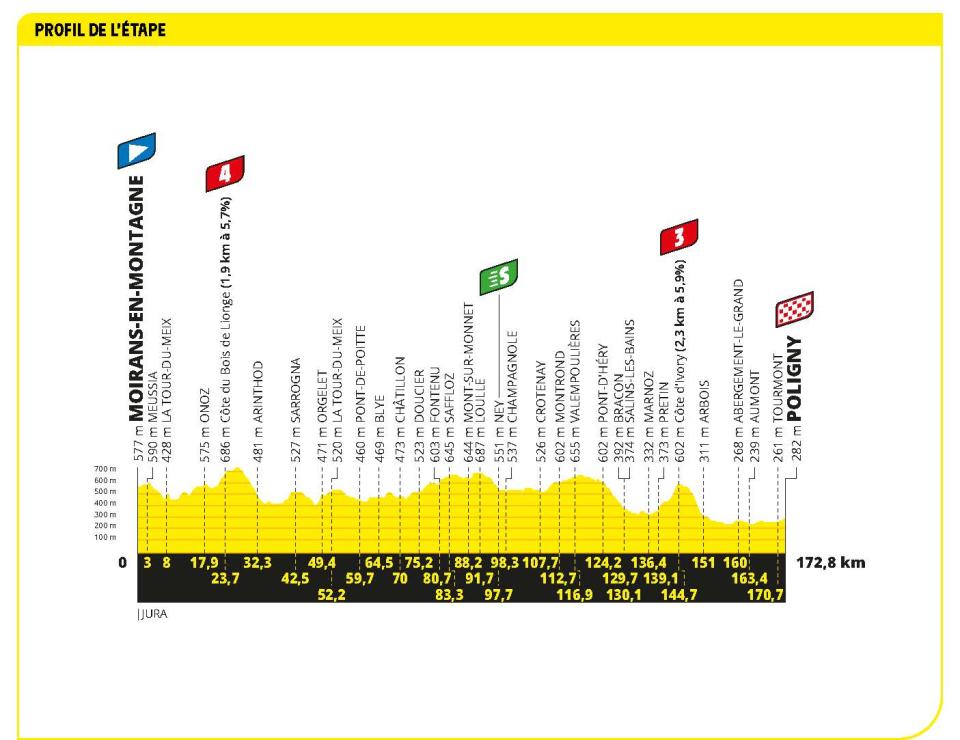
Having escaped the Alps, the race heads towards the Jura, and the home of Comté cheese. There is quite a lot of climbing - almost 2000m - on this supposedly flat stage, but it could all come down to a breakaway in Poligny, unless a breakaway gets in the way. The Côte d’Ivory 30km from the finish should not prove too difficult.
Stage 20: Belfort to Le Markstein Fellering (133.5km)

The race might be very near Germany at this point, but Belfort remained French after the Franco-Prussian War, unlike the territory the penultimate stage travels into.
This is the last chance saloon for all teams and riders who aren’t sprinters, especially those with GC ambitions. However, it is not quite the task of the previous Alpine days, with the six categorised climbs not the most testing. Still, there will be a lot of people trying to make things happen.
Stage 21: Saint-Quentin-en-Yvelines to Paris (115.1km)
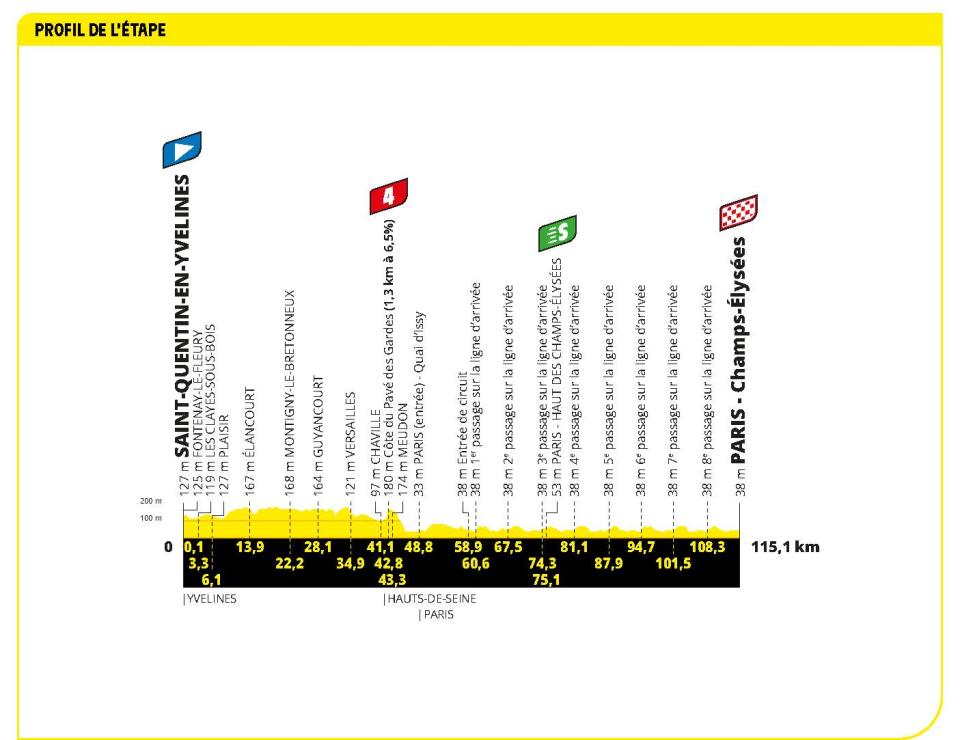
This will be the last time the Tour heads to Paris until at least 2025, so make the most of those shots of the Arc de Triomphe and the Champs-Élysées. The classic procession will happen for the first 55km until the race hits the Champs for the first time 60km in. From that point on, anything goes, although that anything will probably be a bunch sprint.

